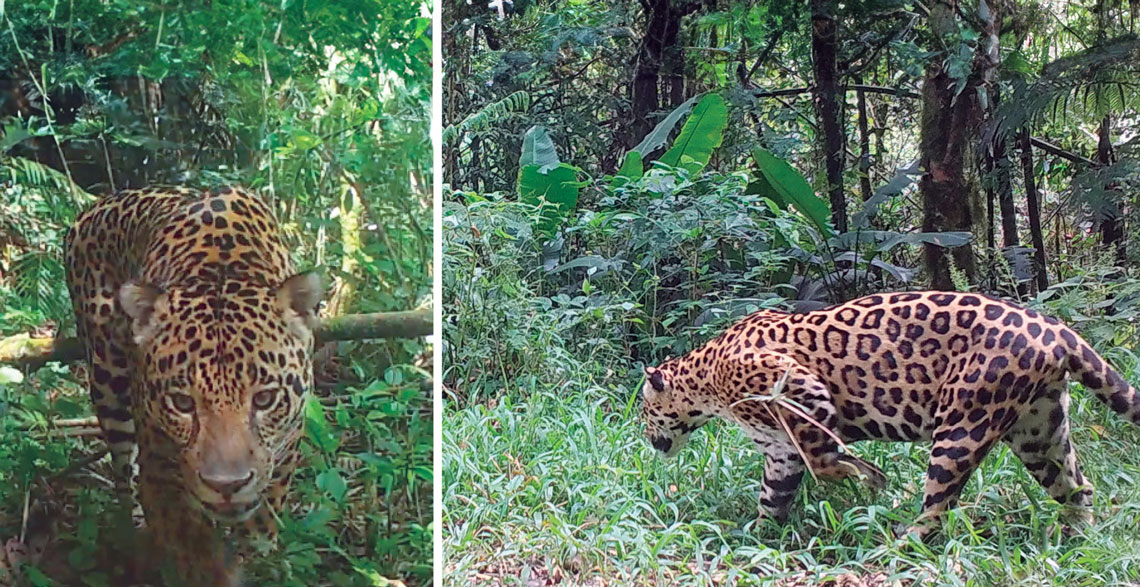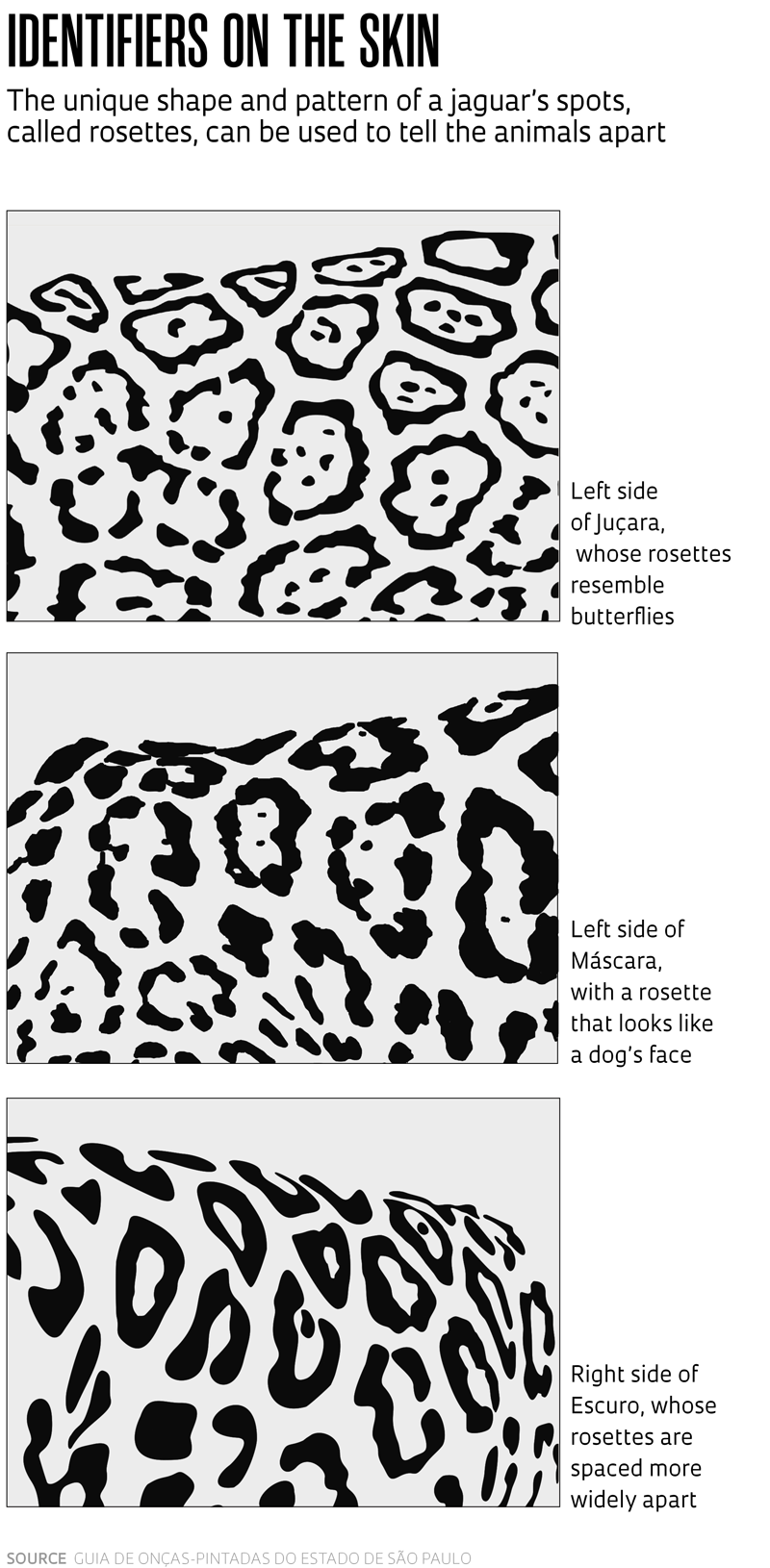Nobody knows how many jaguars (Panthera onca) roam the forests of São Paulo State. The number is likely to be small—the threat of poaching, the scarcity of suitable habitats and prey, and risks of being hit by a vehicle have caused populations of South America’s largest terrestrial carnivores to dwindle. The Guide to jaguars in the state of São Paulo, published at the end of November, portrayed 51 of them.
“It is essential that we better understand jaguar populations and identities. These apex predators are fundamental components of the ecosystem,” says Beatriz de Mello Beisiegel, a biologist from the Chico Mendes Institute for Biodiversity Conservation (ICMBio) who led the survey. Specialists from ICMBio, the Forest Foundation, and the São Paulo State Environmental Research Institute helped plan the study.

Guide to Jaguars in the state of São PauloRonRon, first photographed in 2019 (left); and Aruana, seen in 2020 and 2022Guide to Jaguars in the state of São Paulo
The few jaguars living in São Paulo roam widely. “We identified a male at two points 97 kilometers apart. It walked from the east of the Carlos Botelho state park to the south of PETAR [Alto Ribeira State and Tourist Park] in the southeast region of the state,” says Beisiegel. “By following the individual animals, we can identify corridors between large forest fragments, which need to be maintained and improved.”
Each animal was identified by camera traps set up in the forests and identified by the unique spots on their bodies, known as rosettes. Theodoro, who weighs 90 kilograms (kg) and spends most of his time in the Morro do Diabo state park and near the Paranapanema river in the west of the state, was seen mating in front of one of the camera traps in 2021. The female was not identified. Juçara, seen in 2021 and 2022, is the only female living on the western side of the Morro do Diabo state park.


